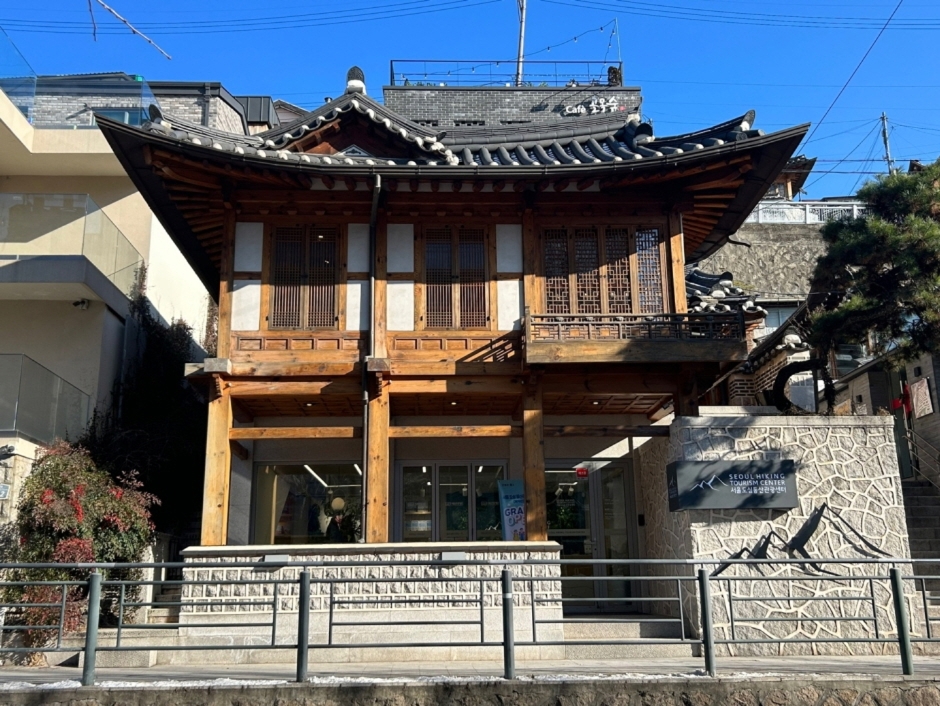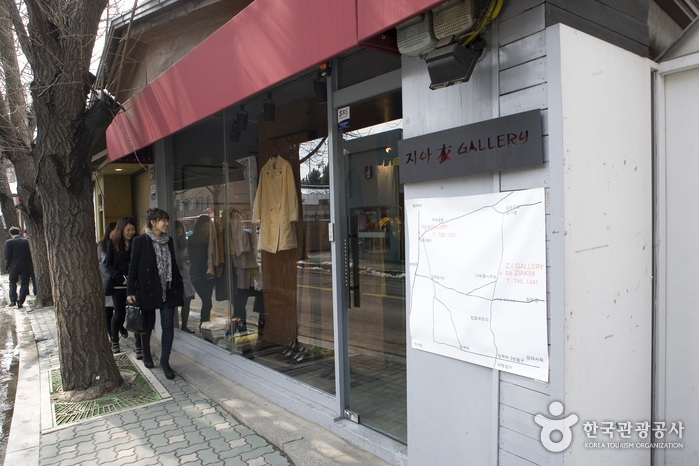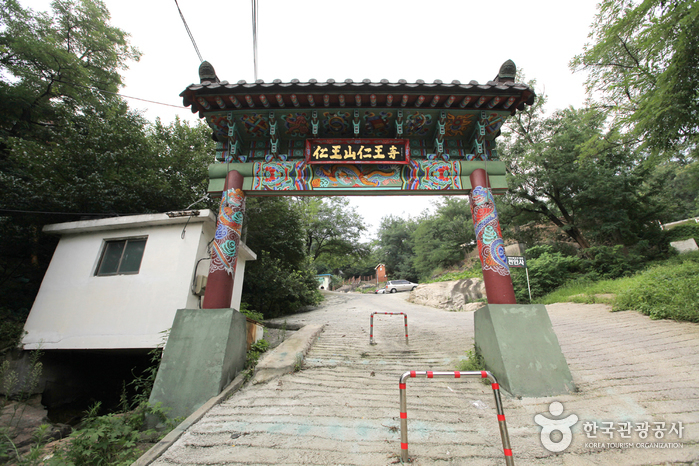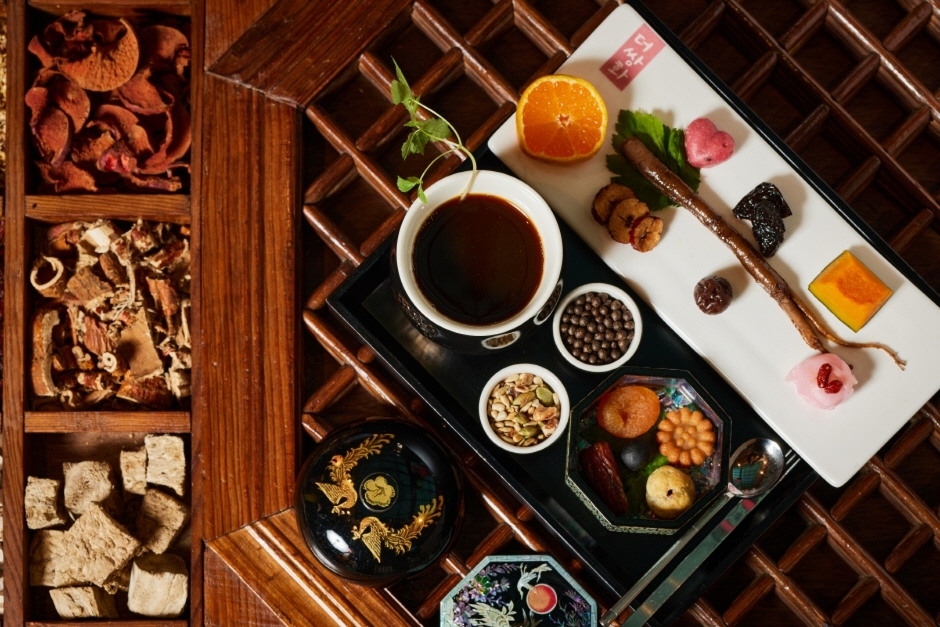Changdeokgung Palace Complex [UNESCO World Heritage Site] (창덕궁과 후원 [유네스코 세계유산])
2.8Km 2025-07-21
99 Yulgok-ro, Jongno-gu, Seoul
Changdeokgung Palace was the second royal villa built following the construction of Gyeongbokgung Palace in 1405. It was the principal palace for many kings of the Joseon dynasty, and is the most well-preserved of the five remaining royal Joseon palaces. The palace grounds are comprised of a public palace area, a royal family residence building, and the rear garden. Known as a place of rest for the kings, the rear garden boasts a gigantic tree that is over 300 years old, a small pond and a pavilion.
The palace gained importance starting from the time of Seongjong, the 9th king of Joseon, when a number of kings began using it as a place of residence. Unfortunately, the palace was burned down by angry citizens in 1592 when the royal family fled their abode during the Imjin War. Thanks to Gwanghaegun, the palace was restored in 1611. Even today, it houses a number of cultural treasures, such as Injeongjeon Hall, Daejojeon Hall, Seonjeongjeon Hall, and Nakseonjae Hall.
Changdeokgung Palace’s garden behind the inner hall, called the "Secret Garden," was constructed during the reign of King Taejong and served as a rest area for the royal family members. The garden had formerly been called Bugwon and Geumwon, but was renamed Biwon Garden, or Secret Garden, after King Gojong came into power. The garden was kept as natural as possible and was touched by human hands only when absolutely necessary. Buyongjeong Pavilion, Buyongji Pond, Juhamnu Pavilion, Eosumun Gate, Yeonghwadang Hall, Bullomun Gate, Aeryeonjeong Pavilion, and Yeongyeongdang Hall are some of the many attractions that occupy the garden. The most beautiful time to see the garden is during the fall when the autumn foliage is at its peak and the leaves have just started to fall.
Though it has been treasured by Koreans for centuries, Changdeokgung Palace and its complex was recognized as a World Cultural Heritage site by the UNESCO World Cultural Heritage Committee in December of 1997 during the committee meeting in Naples, Italy.
Seoul Hiking Tourism Center - Bugaksan Branch (서울도심등산관광센터(북악산))
2.8Km 2024-03-05
88 Samcheong-ro, Jongno-gu, Seoul
The Bugaksan branch of Seoul Hiking Tourism Center is located on Samcheong-dong Culture Street and provides various services to hikers. It provides hiking course guidance and information (available in Korean, English, Chinese, and Japanese) about the mountains of Seoul, including Bukhansan, Bugaksan, and Inwangsan Mountains, as well as promotional materials such as Seoul hiking tourism guidebooks and maps. Also, it operates hiking tour programs with various themes every week for foreigners and offers hiking gear rental services such as hiking boots, hiking attire, trekking poles, gloves, and crampons for foreigners. (Koreans accompanied by foreigners can also rent the gear.) In addition, there is a storage locker and lounge for visitors, so they can pack up and rest before hiking.
E-Mart - Mapo Gongdeok Branch [Tax Refund Shop] (이마트 마포공덕)
2.8Km 2024-04-22
212, Baekbeom-ro, Mapo-gu, Seoul
-
CheongKwanJang - Dongdaemun Market Branch [Tax Refund Shop] (정관장 동대문시장)
2.8Km 2024-04-19
252, Jong-ro, Jongno-gu, Seoul
-
Z.I.Gallery (지아 衣 갤러리)
2.8Km 2020-04-11
76, Jahamun-ro, Jongno-gu, Seoul
+82-2-762-1241
Z.I.Gallery is a boutique shop by the renowend designer, Zia Kim. Her works have appeared in Seoul Collection, Paris Pretaporter, department stores, and shops abroad. Visitors can purchase items with unique designs and cutomized items. It directly runs two brach stores in Gahoe-dong and Hyoja-dong. These handmade items go through meticulous quality management.
Inwangsa Temple (인왕사 (서울))
2.8Km 2020-04-02
16-1, Tongil-ro 18ga-gil, Jongno-gu, Seoul
+82-2-737-4434
Inwangsa Temple refers to the entire cluster of small Buddhist temples located on Inwangsan Mountain (alt. 338m) in the heart of Seoul. The eastern foot of the mountain has many scenic spots with its distinctively cozy and tasteful atmosphere, and the northern area called Mugye-dong also offers beautiful scenery. Inwangsa Temple was established in the early Joseon period (1392-1910) to guard the national palace Gyeongbokbung. The temple is comprised of 11 shrines from five different Buddhist orders. The unique design of each shrine adds pleasure to hikers on their way up to Seonbawi, an unusual rock formation that is a site of many folk beliefs and shamanist rites.
Leeum, Samsung Museum of Art (삼성미술관 리움)
2.8Km 2022-12-15
60-16, Itaewon-ro 55-gil, Yongsan-gu, Seoul
+82-2-2014-6901
Leeum, Samsung Museum of Art, exhibits traditional and modern art works by Korean and international artists. The museum itself is just as fascinating as the art works on display, since the museum's three buildings were designed by internationally renowned architects Mario Botta, Jean Nouvel, and Rem Koolhaas.
MUSEUM 1 houses traditional Korean art, such as calligraphy, paintings, ceramic arts, and metal craftwork, while MUSEUM 2 displays modern and contemporary art by both Korean and international artists.
The Ssanghwa Coffee (더쌍화coffee)
2.8Km 2023-11-03
252-3 Jong-ro, Jongno-gu, Seoul
The Sssanghwa Coffee, located near Dongdaemun Market, is a tea house serving traditional medicinal teas. In matching with their menu, the cafe is also decorated like a room found in a traditional Korean house. The cafe is comprised of three buildings, with the main building being for orders, and the Byeolgung and Ssanghwagung buildings offering seating. Each traditional tea order comes as a set with food items such as rice porriage, fruit, or rice cakes. The cafe also offers rooms which are very popular, so making a reservation is necessary.
Dokkaebi Bulgogi (도깨비불고기)
2.8Km 2024-03-12
38 Eulji-ro 43-gil, Jung-gu, Seoul
+82-2-2269-1538
Dokkaebi Bulgogi is a Korean restaurant located near Dongdaemun Design Plaza (DDP), Cheonggyecheon Stream, and Dongdaemun Gate. Its main menu features Korean-style barbecue made with beef and pork. In addition to dishes like galbi jjim (braised galbi) and pajeon (green onion pancake), they also offer simpler options such as galbitang (galbi soup), jjigae (stew), and naengmyeon (cold buckwheat noodles).
![Changdeokgung Palace Complex [UNESCO World Heritage Site] (창덕궁과 후원 [유네스코 세계유산])](http://tong.visitkorea.or.kr/cms/resource/03/3092503_image2_1.jpg)

![E-Mart - Mapo Gongdeok Branch [Tax Refund Shop] (이마트 마포공덕)](http://tong.visitkorea.or.kr/cms/resource/21/2888621_image2_1.jpg)
![Kum Bak Yeon [Tax Refund Shop] (금박연)](http://tong.visitkorea.or.kr/cms/resource/74/3313974_image2_1.jpg)
![CheongKwanJang - Dongdaemun Market Branch [Tax Refund Shop] (정관장 동대문시장)](http://tong.visitkorea.or.kr/cms/resource/33/2878233_image2_1.jpg)




 English
English
 한국어
한국어 日本語
日本語 中文(简体)
中文(简体) Deutsch
Deutsch Français
Français Español
Español Русский
Русский